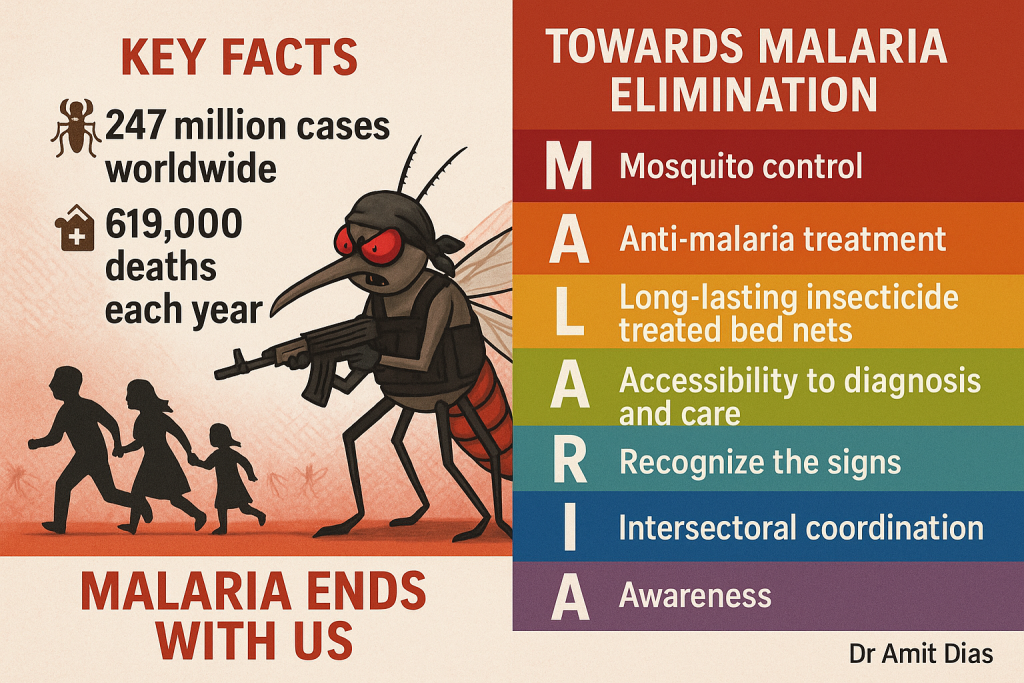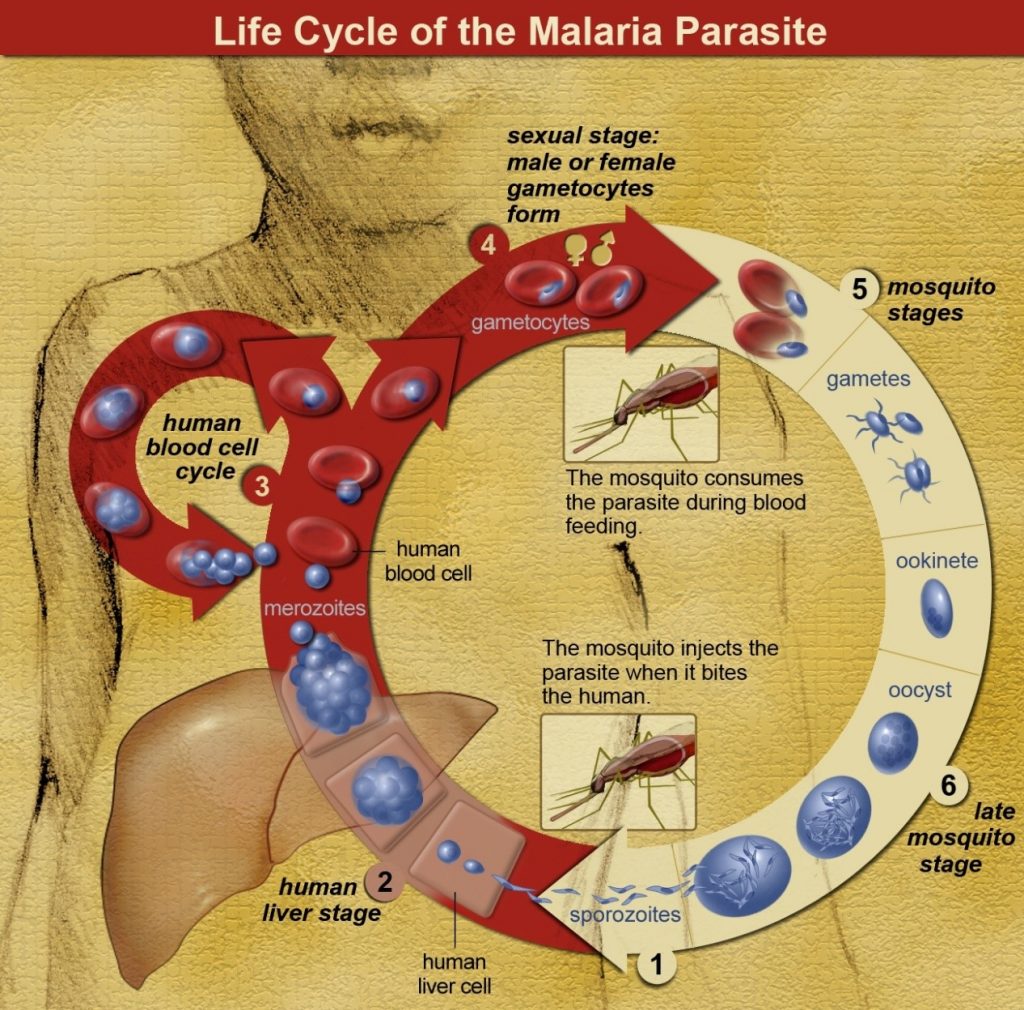Goa is abuzz with excitement as vintage bike and car owners, users, collectors and fans are decking […]

DECODING MALARIA:THE ROAD TO ELIMINATION
May 03- May 09, 2025, MIND & BODY, HEART & SOUL May 2, 2025Q&A interview with Dr Amit Dias for World Malaria Day
Every year, World Malaria Day is observed on April 25, to raise awareness and galvanize action toward eliminating malaria. The theme this year, “Malaria Ends With Me,” places the power of change in the hands of every individual. In this exclusive interview, we speak to Dr Amit Dias, an expert in Preventive Medicine, who decodes the word MALARIA to help us understand the roadmap to elimination. “It’s like war against terrorism and we cannot do it alone,” he says, “But if we put our act together, we can end malaria in our lifetime.”
Goan Observer: Doctor, let’s start by trying to understand the current status of malaria in the world, could you enlighten us?
Dr Amit Dias: Globally, malaria remains a major public health concern. According to the WHO, there were an estimated 247 million cases of malaria and approximately 619,000 deaths in 2023. Most of these deaths occurred in children under five in sub-Saharan Africa.
In India, we have made remarkable progress. According to the NVBDCP, malaria cases have significantly declined, and we are aiming for malaria elimination by 2030. Goa, too, has seen a decline in cases — but we must remain alert. Yes, we still do get cases of malaria, and just last week, our center reported two cases. Interestingly, we’ve seen a rise in dengue cases, especially with increased construction activities.
Q: Are there areas in the world that are malaria-free? How did they achieve it?
A: Yes, several countries have been certified malaria-free by the WHO — including Sri Lanka, El Salvador and China. These countries achieved elimination through sustained political commitment, robust surveillance, vector control and community engagement. They didn’t let their guard down even when numbers decreased.
Q: What is the key message for malaria awareness this year?
A: The key message is: “Malaria Ends With Me.” This underscores that elimination isn’t just a government job — each one of us has a role. Let me decode the word MALARIA to help you understand the road map to elimination.
M.A.L.A.R.I.A. — The Seven-Point Strategy:
M – Mosquito control
Prevent breeding by removing stagnant water, using larvicides, and improving drainage. Community participation is crucial.
A – Anti-malaria treatment
Seek prompt medical care. We have effective drugs available against the parasite, but they have to be taken appropriately.
L – Long-lasting insecticide-treated bed nets
Sleeping under treated nets can reduce malaria transmission significantly, especially in high-risk areas.
A – Accessibility to diagnosis and care
Early detection is key. We need more point-of-care testing, especially in rural and tribal areas. In Goa, rapid testing facilities are available at all government the health centers.
R – Recognize the signs of Malaria
Symptoms include fever with chills, headache, nausea, sweating, body ache, and sometimes jaundice or altered consciousness. Don’t ignore a persistent fever.
I – Intersectoral coordination
This is like a war against terrorism. It cannot be done alone. Departments like health, urban development, environment, and education must work together to control vectors and spread awareness.
A – Awareness for Behaviour Change
People need to understand how malaria spreads, how to prevent it, and the importance of completing treatment. Bring about behavior change and everyone should participate in source reduction.
Q: What organism causes malaria and how does it enter our body?
A: Malaria is caused by Plasmodium parasites, transmitted through the bite of an infected female Anopheles mosquito. The parasite enters our bloodstream, travels to the liver, multiplies, and then re-enters the bloodstream to infect red blood cells.
Q: What are the main types of malaria?
A: There are five types of Plasmodium parasites that infect humans. However the most common ones are P. falciparum – most severe and potentially fatal and P. vivax – common in India, can relapse
Q: Tell us more about the mosquito vector.
A: The female Anopheles mosquito is the vector. It breeds in clean water, Can fly up to 1-2 km, is active from dusk to dawn. Important species include Anopheles stephensi (urban areas) and Anopheles culicifacies (rural areas)
Q: Can we eliminate malaria? How far are we from our goal?
A: Yes, that our goal. Malaria is a preventable and treatable disease. India is part of the E-2025 initiative by WHO to eliminate malaria by 2030. The National Vector Borne Disease Control Program (NVBDCP) is the nodal agency leading this mission through surveillance, diagnosis, treatment, and vector control.
Q: What are the global strategies for malaria elimination?
A: Global strategies include:
Universal access to malaria prevention and treatment
Investing in R&D for vaccines and diagnostics
Strengthening surveillance systems
Engaging communities
Combating drug and insecticide resistance

Q: Why observe Malaria Day in April — when it’s not even malaria season?
A: April is chosen strategically — to remind us to prepare before the monsoons, when malaria typically spikes. With rampant construction in various places in Goa, vector breeding is already underway. In the monsoons, we will have to be careful in areas like Panjim and Porvorim. Planning and Prevention starts now.
Q: Why is the theme “Malaria Ends With Me”? What role can people play?
A: The theme emphasizes individual responsibility. Every citizen can:
Avoid water stagnation – empty flower pots, do not keep items that can collect water all around your house.
Keep surroundings clean, close doors windows in the evening, use mesh for the windows if possible.
Use bed nets and repellents
Seek timely treatment
Encourage others to do the same
Q: What are the complications of malaria?
A: Complications can include:
Cerebral malaria – seizures, coma
Severe anemia
Pulmonary edema
Hypoglycemia
Multi-organ failure
Blackwater fever – hemoglobinuria
Acute renal failure
In pregnancy – stillbirth, low birth weight
Q: What are the medications commonly used for malaria ?
A: Chloroquine, ACTs, and Primaquine are used depending on the species and region. Primaquine is essential to prevent relapse in P. vivax. However, drug resistance, especially to P. falciparum, is a growing concern.
Q: Any advice for travelers going to malaria-endemic areas?
A: Use insect repellent, sleep under treated nets, wear long sleeves and trousers, In some areas, prophylactic antimalarial medication may be recommended (consult a doctor)
Q: What are the objectives of the NVBDCP program?
A: The NVBDCP (National Vector Borne Disease Control Program) aims to:
Reduce morbidity and mortality due to vector-borne diseases
Strengthen diagnosis and treatment
Ensure integrated vector management
Enhance community participation
Achieve malaria elimination by 2030
Q: Any final message for our readers?
A: Malaria is not someone else’s problem — it’s everyone’s. Take steps today. Prevent breeding, protect yourself, and spread awareness. Because truly, Malaria Ends With Me… and with you. Remember the decoded message on MALARIA and share it with others to join the war against malaria. It’s true that the incidence of malaria has decreased, but this is the time we need to step up out fight or it will make a comeback like it did earlier.
















